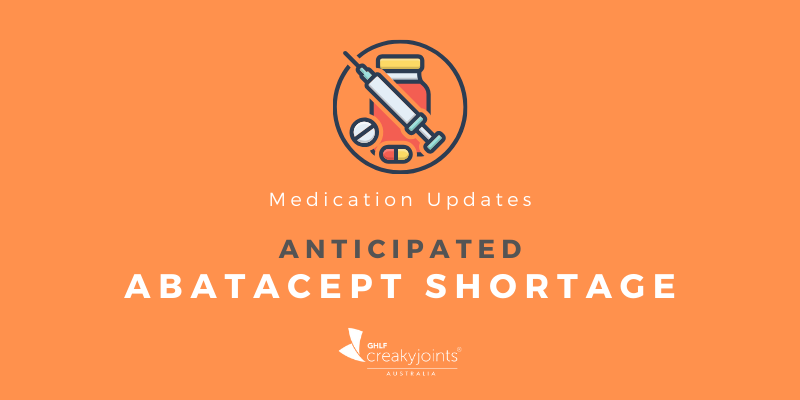NSAIDs (Nonsteroidal Anti-inflammatory Drugs)
Nonsteroidal anti-inflammatory drugs, or NSAIDs (pronounced “en-seds” or “en-sayeds”), are the most commonly used treatments for inflammation and pain symptoms. While some of your other arthritis medications are designed to slow or stop your disease progression from within your body’s immune system and, therefore, ease joint swelling and pain, you may also take NSAIDs to help manage your symptoms.
NSAIDs are used for inflammatory conditions, such as osteoarthritis and rheumatoid arthritis, and also for non-inflammatory conditions like migraine and period pain.
They are generally safe to use for minor flares of pain, but they do have many possible side effects if you take them for a long time or in high doses.
What Are NSAIDs?
NSAIDs block fatty acids made by your body called prostaglandins. These acids, such as Cyclo-Oxygenase 1 and 2 (COX-1 and COX-2), play a role in inflammation and pain.
Some NSAIDs inhibit both COX-1 and COX-2, however, COX-1 does have several benefits. It protects the stomach from stomach acid, maintains the stomach lining and also helps with kidney and platelet function. On the other hand, COX-2 is mainly found at inflammation sites. There are some NSAIDs that only block COX-2, so they may be gentler on your stomach and have fewer side effects than other NSAIDs.
Some over-the-counter (OTC) NSAID brands include more than one active ingredient. (For example, Nurofen® contains codeine phosphate hemihydrate plus ibuprofen.)
Over-the-counter NSAIDs include:
- Aspirin (Disprin®, Aspro Clear®)
- Ibuprofen (Nurofen®, Brufen®, Nuromol®)
- Diclofenac sodium (Voltaren®, Solaraze®, Fenac®)
Prescription NSAIDs include:
Non-selective COX-1 and COX-2 inhibitors
- Naproxen sodium (Anaprox®, Crystanal®)
- Ketoprofen (Orudis®, Oruvail®)
- Piroxicam (Feldene®, Mobilis®, GenRx®)
Selective COX-2 inhibitors
- Celecoxib (Celebrex®)
- Etoricoxib (Arcoxia®)
- Meloxicam (Mobic®)
The NSAIDs available over the counter generally have lower doses for mild pain. For stronger pain, there are higher doses of NSAIDs available by prescription. Some NSAIDs are only available by prescription.
Don’t take an over-the-counter NSAID if you’re already taking a prescription NSAID, and check with your doctor or pharmacist before using a topical NSAID (generally used for local inflammation sites). If you are already using another form of NSAID, you could easily take too much medicine and put yourself at high risk for side effects like stomach pain or bleeding.
You can buy generic or “store brand” versions of most of these medications.
No single NSAID is more effective than others. It’s up to you and your rheumatologist to decide which one may be right for you to take for your arthritis pain.
Why Am I Taking an NSAID?
If you have arthritis, you may need to take an NSAID for joint pain or stiffness from time to time. Or your rheumatologist may prescribe a stronger NSAID for your pain if needed. You may not have to take NSAIDs long term. You may just need to take an NSAID on days when your pain feels worse than normal. If you overdo physical activity on certain days and ache afterwards, an NSAID may be helpful for relieving your short-term pain.
Some people with arthritis can control their joint pain, inflammation or stiffness well with their other medications, so they may not need NSAIDs at all or only once in a while. Other people may find their other medications don’t work well enough to control their pain and need to take an NSAID regularly, too. It depends on your body, your day-to-day pain and how well your other medications are working to keep your condition under control.
Since taking NSAIDs regularly for pain may cause side effects, talk to your doctor about the best way to manage your pain. He or she may suggest that you keep NSAIDs on hand just in case you need them.
Even OTC NSAIDs can have side effects, especially if you take them often. For example, if you need to take OTC NSAIDs for longer than two weeks for chronic arthritis pain, it could be a red flag. Talk to your treating doctor about your options and make sure your doctor knows everything you are taking for your pain, even OTC medications or supplements.
What Are the Possible Side Effects of NSAIDs?
NSAIDs are generally safe and easy to tolerate. The most common side effect of taking NSAIDs is stomach pain or heartburn. Others include:
- Ulcers
- Raised blood pressure
- Ringing in your ears
- Light-headedness or dizziness
- Unusual weight gain
- Headaches
- Increased risk of bowel issues (such as ulcerative colitis)
- Increased risk of heart attack or stroke
If you notice any of the following symptoms, get medical care right away.
- Vomiting
- Swollen ankles, hands or feet from fluid retention
- Black or bloody stool
- Allergic reactions, or liver and kidney problems (rarely)
Your risk of side effects goes up if you take higher doses of NSAIDs or take these medications over long periods of time. Also, people who are older or have a history of ulcers may be at higher risk for stomach problems with NSAID use. COX-2 inhibitors are gentler on the stomach than other NSAIDs, however, they do not protect the bowel and may still cause other side effects.
NSAIDs are not recommended during pregnancy unless specifically advised by your doctor.
Taken over a long time, NSAIDs may raise your risk of serious heart problems. If you already have high blood pressure, it’s important to make sure it’s under control so you don’t put yourself at increased risk for a heart attack or stroke.
Talk to your doctor about the risks and benefits of using NSAIDs in your situation.
How to Monitor for Side Effects
Let your doctor know if you have unpleasant side effects like heartburn or stomach pain. Don’t “grin and bear it.” Your rheumatologist may be able to lower your dose or suggest another medicine for your pain. Don’t try to treat severe stomach pain or heartburn on your own.
Keep up with all of your regular check-ups so you and your doctor can track your blood pressure and other vital signs while you take NSAIDs.
What Can I Do to Help Prevent or Ease Side Effects?
If you have side effects from your NSAIDs, such as stomach pain or heartburn, you may be able to add another medicine to lower your stomach acid. These include omeprazole and misoprostol. Some of these medications are available over the counter while others require a prescription.
Some simple things you can do to ease the side effects of NSAIDs include:
- Taking your medicine with food, such as your normal meals or a snack.
- Trying coated aspirin instead of uncoated.
- Taking the lowest possible dose you need to manage your pain.
- Ask your treating doctor which NSAIDs are most suitable for you based on your circumstances.
- Considering using an analgesic, such as paracetamol, for occasional joint pain instead of NSAIDs. It has some side effect risks too, so talk to your doctor before you take any OTC medication for your pain.
Arthritis treatment information is also included in all editions of the CreakyJoints Australia Raising the Voice of Patients series. Learn more or download your free copy of A Patient’s Guide to Living with Rheumatoid Arthritis in Australia or A Patient’s Guide to Living with Axial Spondyloarthritis in Australia today.
For more information about biosimilars, the Therapeutic Goods Administration (TGA), Pharmaceutical Benefits Scheme (PBS) and much more, listen to the relevant episodes of our Patient PrepRheum podcast series or read the transcriptions attached to each episode.





